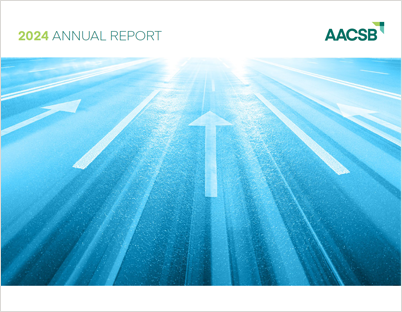Michael Goldstein
Summary
Michael Goldstein is the Donald P. Babson Chair in Applied Investments and a professor of finance at Babson College. His climate work focuses on pricing the effects of near-term climate change, with a particular concentration on pricing the economic impacts of climate variance. Much of this climate research is centered on the Arctic region, particularly its shipping industry and sea ice conditions, where the effects of climate change have been the most dramatic; other work concentrates on droughts or sea level rise. Goldstein’s market microstructure work focuses on transaction costs and market efficiency.
Description of Research Impact
Addressing climate change will result in a variety of trade-offs and costs to nations worldwide. Therefore, businesses and governments need to make investment decisions now that will affect their costs over the next 10 to 20 years. Goldstein’s climate work examines the economic costs of changes that are either occurring at present or will occur over economically relevant time periods. This work has provided a relatively simple method for valuing changes and costs due to increased trends and variance for issues as disparate as ice roads in northern regions and drought conditions in California.
Instead of using expensive, complex computer models, Goldstein’s work has provided a method by which an answer can be retrieved in 30 seconds using a basic computer. Goldstein’s other research has also provided such information as the value of the snowpack in the western U.S. (about 4 trillion USD) and the value of reducing the temperature of a major world capital (for example, Sydney, Australia) by one degree Celsius through the use of solar panels. Goldstein’s most recent work has valued the cost of sanctions on Russia each year due to the Northern Sea Route (NSR) above Russia effectively being closed to ships (a cost of about 3.3 to 10 billion USD). Goldstein’s related research has further shown that while many Norwegian coastal cities wish to invest in their ports, roads, and rails to become transshipment hubs for ships using the NSR, they are not economically viable stops.
Goldstein’s second influential research stream on market microstructure addresses how the actual mechanisms of trading affect markets and the prices we see. This work examines trading costs and other frictions in both equity and bond markets. A measure of trading costs Goldstein helped develop, known as effective spreads, is now widely used to measure transaction costs and trading efficiency; in addition, all exchanges and markets have been mandated by the U.S. government to provide estimates of effective spreads. Goldstein’s work has also been used by regulators and businesses to examine the efficiency of different markets in the U.S., and his work on bond transparency and its effects on bond liquidity helped increase the regulatory mandates of bond trading transparency.
Goldstein’s research has had other far-reaching effects, as well. For instance, his studies on circuit breakers has influenced their design worldwide. In addition, while Goldstein’s most recent work on high-frequency trading strategies informs regulators about liquidity provision, his earliest efforts directly changed the privatization program of Poland for 60 million people, resulting in one of the most successful transitions to a capitalist system from a formerly communist country.
Select Publications
- Michael Goldstein, Amy Kwan, and Richard Philip, “High Frequency Trading Strategies,” Management Science 69, no. 8 (August 2023), 4413–34, https://doi.org/10.1287/mnsc.2022.4539. ISSN 0025-1909 (print), ISSN 1526-5501 (online).
- Michael A. Goldstein, Amanda H. Lynch, Xueke Li, and Charles H. Norchi, “Sanctions or Sea Ice: Costs of Closing the Northern Sea Route,” Finance Research Letters 50 (2022), https://doi.org/10.1016/j.frl.2022.103257.
- Michael A. Goldstein, Amanda H. Lynch, and Charles H. Norchi, “Conflict’s Impact Raises Costs for Arctic Shipping and the Climate,” Nature, June 7, 2022, https://doi.org/10.1038/d41586-022-01538-w.
- Michael A. Goldstein et al., “The Step-Like Evolution of Arctic Open Water,” Scientific Reports 8, no. 16902 (2018), https://doi.org/10.1038/s41598-018-35064-5.
- Matthew Sturm, Michael A. Goldstein, Henry Huntington, and Thomas A. Douglas. “Using an Option Pricing Approach to Evaluate Strategic Decisions in a Rapidly Changing Climate: Black–Scholes and Climate Change,” Climatic Change 140, no. 3 (February 2017), 437–49, https://doi.org/10.1007/s10584-016-1860-5.
- Matthew Sturm, Michael A. Goldstein, and Charles Parr, “Water and Life from Snow: A Trillion Dollar Science Question,” Water Resources Research 53, no. 5 (May 2017): 3534–44, https://doi.org/10.1002/2017WR020840.
Supporting Links
- Michael A. Goldstein, personal website
- Welcome to Arctic Economics, Babson College





